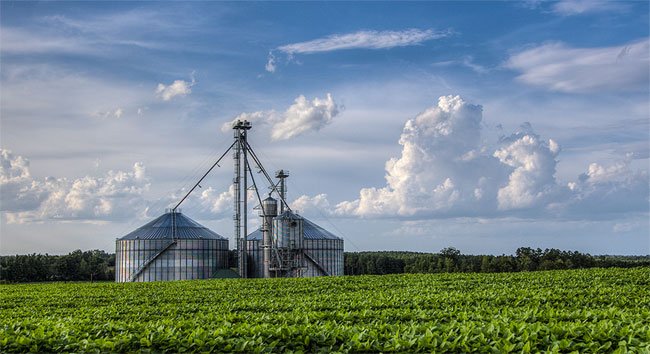Introduction
Pageland farm plantation marsteller is an iconic historical site that reflects the complex and layered history of plantations in the United States. Located in a region steeped in agricultural and social history, Patgeland Farm offers a glimpse into life on a working plantation during the 18th and 19th centuries. From its founding by the Marsteller family to its modern-day significance, the plantation provides insight into both the agricultural development and the cultural legacies of the time.
The History of Patgeland Farm Plantation
Patgeland Farm Plantation was founded in the early 1800s, during a period when plantations played a pivotal role in the American economy, particularly in the Southern states. The Marsteller family, prominent landowners, and agricultural innovators, established the farm as part of a broader movement toward large-scale farming. Their leadership helped shape the plantation into a prosperous agricultural hub, contributing significantly to the regional economy.
Geographical Location and Importance
Patgeland Farm Plantation is located in a fertile agricultural region, ideal for the cultivation of cash crops. Its proximity to waterways and trade routes made it an essential part of the local economy, allowing for easy transportation of goods to markets.
Agriculture and Economy at Patgeland Farm
The economy of Patgeland Farm was primarily based on large-scale agriculture, with crops like cotton, tobacco, and corn being the mainstays. This system relied heavily on the labor of enslaved people, who worked the fields and maintained the plantation, making it one of the most prosperous farms in the area during its peak.
The Role of Slavery at Patgeland Farm
Like many plantations of its time, Patgeland Farm’s success was built on the institution of slavery. Enslaved men, women, and children worked long hours under harsh conditions, providing the labor necessary to sustain the plantation’s operations.
Transition and Change Post-Civil War
The Civil War brought profound changes to the plantation system in the Southern United States, and Patgeland Farm was no exception. After the war, the abolition of slavery forced plantation owners like the Marsteller family to restructure their operations. While the farm continued to function, it shifted toward a different economic model during the Reconstruction era, relying on sharecropping and tenant farming. This period marked a significant transformation in the plantation’s history.
Architecture and Design of Patgeland Farm
The architectural design of Patgeland Farm reflects the grandeur and elegance typical of Southern plantations. The Marsteller family home is a striking example of antebellum architecture, featuring tall columns, expansive verandas, and intricately detailed interiors. The plantation buildings, including barns and storage houses, showcase the practical yet refined style of the time, designed for both functionality and aesthetic appeal.
Cultural and Social Influence
The Marsteller family played an influential role in the cultural and social life of the surrounding region. As plantation owners, they were part of the elite class, hosting social gatherings and contributing to local politics and decision-making. Patgeland Farm was not just an agricultural center but also a social hub where important community events took place.
Patgeland Farm During the 20th Century
As the 20th century progressed, Patgeland Farm saw many changes. Agricultural practices evolved, and the reliance on manual labor decreased with the advent of machinery. The decline of traditional farming gave way to restoration initiatives aimed at maintaining the plantation’s architecture and grounds, ensuring its survival into the modern era.
Restoration Efforts and Preservation
Today, Patgeland Farm is preserved as a historical landmark, thanks to the efforts of preservationists who recognized its significance. Restoring the plantation’s buildings and landscape has been a long-term project, ensuring that the farm remains a testament to its past while adapting to present-day needs. The preservation of the Marsteller family home, in particular, has been a focal point, as it represents an architectural and cultural treasure.
Modern-Day Patgeland Farm Plantation
In the present day, Patgeland Farm serves multiple purposes. The plantation is also open to visitors, offering tours that highlight its historical significance, architecture, and the stories of the people who lived and worked there. It has become a popular destination for those interested in Southern history and agricultural heritage.
Educational and Historical Programs
Patgeland farm plantation marstelleroffers a variety of educational programs designed to inform visitors about the plantation’s history and the broader context of Southern agriculture and slavery. Guided tours provide in-depth knowledge of the plantation’s operations, the role of the Marsteller family, and the experiences of the enslaved people who lived there. Special events, lectures, and school programs further engage the public in learning about this important part of American history.
Patgeland Farm in Popular Culture
Though not as widely recognized as some other plantations, Patgeland Farm has been featured in local media and historical publications. Its story contributes to the broader narrative of plantations in America and the legacies they have left behind. The farm’s combination of historical significance and architectural beauty has made it a subject of interest for historians and cultural enthusiasts alike.
Visitor Information
For those interested in visiting Patgeland Farm, the plantation is open to the public for tours throughout the year. Visitors can explore the Marsteller family home, the grounds, and other restored buildings. Educational tours provide insight into both the historical significance and the lives of the people who lived and worked on the plantation. The farm also hosts events, including reenactments and agricultural demonstrations, offering a hands-on experience for visitors.
Conclusion
patgeland farm plantation marsteller is a unique historical site that offers valuable insights into the agricultural, social, and architectural history of the Southern United States. From its beginnings as a prosperous plantation to its current role as a preserved historical landmark, Patgeland Farm continues to serve as a reminder of the complexities and legacies of the past. Whether you’re a history enthusiast or simply curious about life on a plantation, a visit to Patgeland Farm offers a rich, educational experience.

Leave a Reply